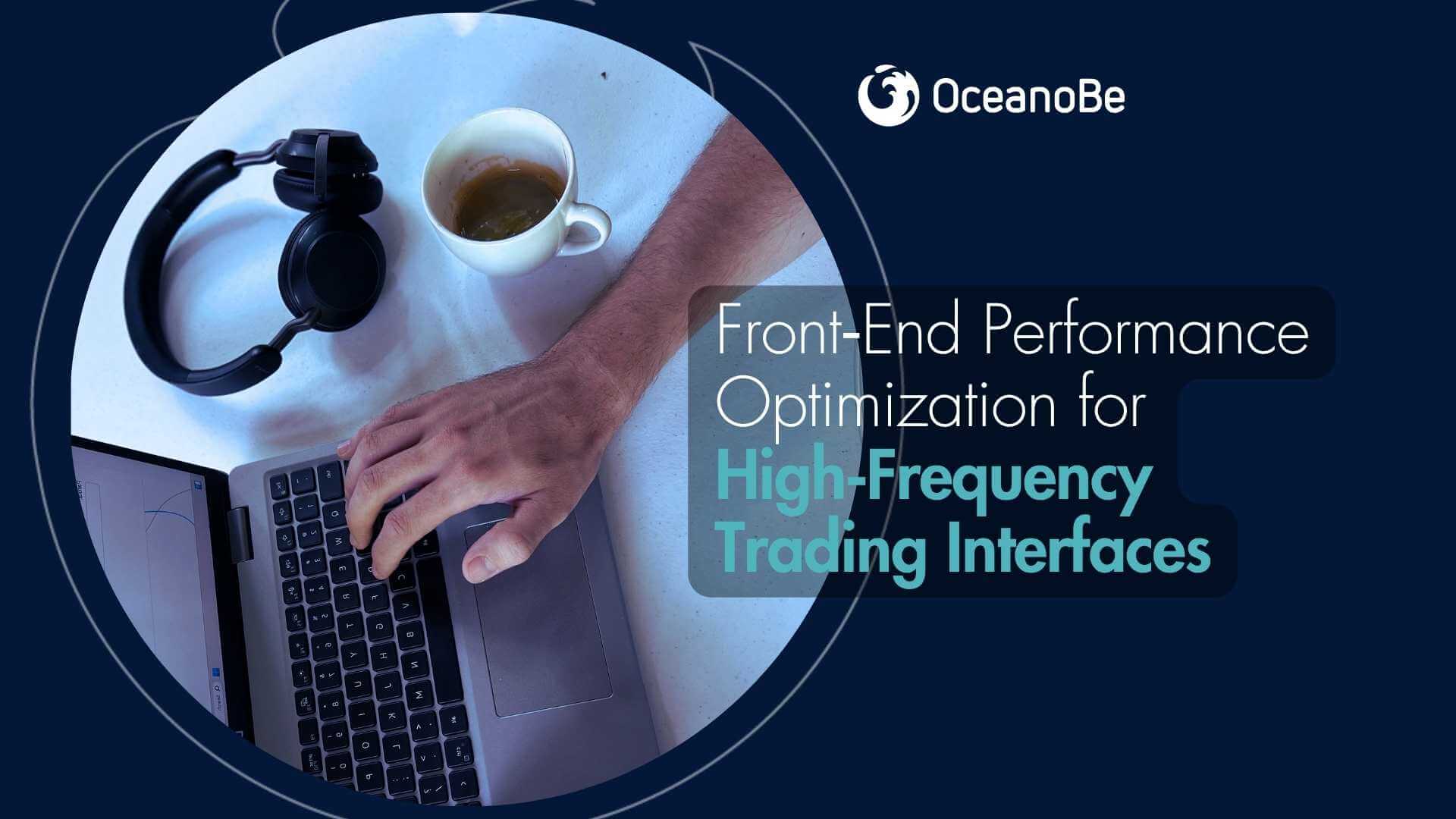Front‑End Performance Optimization for High‑Frequency Trading Interfaces
How to fine-tune trading UIs for low latency, seamless interactivity, and real-time precision.
How to fine-tune trading UIs for low latency, seamless interactivity, and real-time precision.

High-frequency trading (HFT) systems operate on razor-thin margins of time—often measured in milliseconds or microseconds. While the back-end infrastructure handles the core logic and execution speed, the front-end interface plays a crucial role in delivering market data, enabling trader interaction, and providing immediate visual feedback.
Let’s explore together how to optimize front-end performance for high-frequency trading platforms using techniques such as intelligent DOM rendering, efficient WebSocket handling, memory profiling, and browser performance tuning. From a fintech developer’s perspective, we aim to align UX responsiveness with real-time trading performance.
In traditional web apps, a 300ms UI delay is often acceptable. In high-frequency trading environments, it's a blocker.
HFT traders rely on split-second decisions informed by rapidly updating charts, tables, and tickers. Any lag or UI stutter can result in missed opportunities or misinterpretation of market data. This makes front-end performance optimization not just a UX concern, but a mission-critical engineering priority.
Rendering thousands of elements in real-time—like fluctuating prices, orders, and trades—demands careful management of the Document Object Model (DOM).
Virtualization and Windowing: Use libraries like react-window or react-virtualized to render only visible portions of large lists or tables.
Avoid DOM Thrashing: Batch DOM reads and writes to prevent layout recalculations.
Minimize Reflows: Reduce expensive layout changes by minimizing CSS complexity and avoiding deep nesting.
Key takeaway: Optimize for minimal re-rendering, especially in ticker components or live trading books.
WebSockets are the backbone of real-time communication in HFT front-ends, ensuring a constant stream of pricing, depth, and execution data.
Throttle and Debounce Updates: Use buffering strategies to avoid overloading the UI with too many renders per second.
Message Filtering: Only push updates to relevant UI components based on subscribed instruments or trader focus.
Reconnect Logic: Design graceful reconnect and retry mechanisms to avoid data loss or inconsistent state during brief disconnects.
Pro tip: Consider message batching at the protocol level, and defer non-critical UI updates to animation frames (requestAnimationFrame) or idle callbacks (requestIdleCallback).
Memory leaks in a trading platform are silent killers—they gradually increase CPU usage, slow down UI updates, and eventually crash the session during peak activity.
Unsubscribed WebSocket Listeners: Ensure cleanup on component unmount.
Detached DOM Nodes: Prevent lingering references to unused elements.
Large In-Memory Caches: Use size-limited caches for recent data (like LRU strategies—Least Recently Used).
Use tools like Chrome DevTools' Performance and Memory tabs to trace heap usage, identify detached DOM trees, and monitor garbage collection patterns.
Real-time charting (e.g., candlestick or depth charts) is particularly challenging.
Use WebGL over SVG/Canvas for rendering large-scale or animated visuals.
Defer background redraws or batch visual updates every N milliseconds.
Libraries like highcharts, lightweight-charts, or echarts can be configured for performance modes.
Choose rendering technologies based on complexity: lightweight DOM for simple tickers, canvas for depth books, and WebGL for fully interactive charts.
In HFT interfaces, observability should include:
Render time metrics: How long a price update takes to reflect visually.
Dropped frames: Track with the FPS (Frames Per Second) monitor.
Event queue latency: Especially for key trading actions like "Buy" or "Cancel".
Set performance budgets: e.g., <16ms for critical interactions, <1s for background chart refreshes. Use RUM (Real User Monitoring) tools for field data.
Modern trading UIs are often built with:
React, Vue, or Svelte for reactive UIs
Redux, MobX, or RxJS for state management
WebSockets or MQTT for real-time communication
Web Workers to offload calculations or parsing
TypeScript for safer scaling and maintenance
Performance tuning is an ongoing process. Adopt a CI-integrated profiling pipeline to catch regressions early and enforce latency standards.
Final Ideas
Optimizing front-end performance in high-frequency trading systems is about delivering immediacy without instability. By fine-tuning rendering, managing memory, and building for resilience under real-time pressure, fintech engineering teams can build interfaces that empower speed, confidence, and precision.
Whether you’re designing for institutional traders or modern retail brokers, low-latency UI engineering is your competitive edge.
______________________________________________________
Interested in building performant front-ends for high-frequency platforms?
At OceanoBe, we help fintech and banking clients architect real-time systems—from backend to pixel. Let’s talk about your next trading platform.